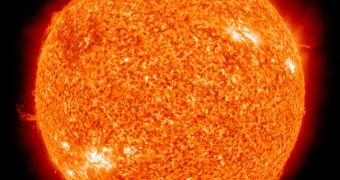According to the conclusions of a new astronomical study, it would appear that as many as one third of all Sun-like stars out there have extrasolar planets in orbit, revolving around their stars within the habitable zone. This area allows for the existence of liquid water on the planetary surface.
The new number was calculated from datasets beamed back by the NASA Kepler Telescope. This particular spacecraft is dedicated exclusively to searching for Earth-sized exoplanets in a batch of the night sky containing about 150,000 stars.
This observatory single-handedly contributed hundreds of exoplanets to known classifications, and about 1,235 more candidates await confirmation. Astronomers expect Kepler's success rate to stand at about 80 percent, maybe more.
Given the sheer size of Kepler's haul, experts were able to input all the data in computer models, and then use the simulations to derive statistical projections. This is how experts at the California Institute of Technology (Caltech), in Pasadena, came up with the new numbers.
While the bulk of the work was focused on analyzing the traits of exoplanets and candidates Kepler identified, a parallel effort sought to introduce all available results inside computer models. More data contribute to making the model more reliable, experts say.
Caltech team leader Wesley Traub says that the newest study was focused exclusively on Sun-like stars, sporting the classification F, G or K. The simulation indicates that mid-sized planets are just as likely to be found around large and small stars alike.
But only very few exoplanets can be found around dim stars, the same data revealed. Kepler has a tendency to identify planets that are very close to their parent star, which is where they are most visible.
But the stars' habitable zones stretch further away into their respective systems than the orbits these close companions take. The data analysis software Traub and his group used focused on the chances of other alien worlds existing within these habitable zones, Technology Review reports.
The simulation reveals that “about one-third of FGK stars are predicted to have at least one terrestrial, habitable-zone planet,” the team leader explains. Undoubtedly, as observations technologies become more advanced, some of these worlds will be revealed to us.

 14 DAY TRIAL //
14 DAY TRIAL //